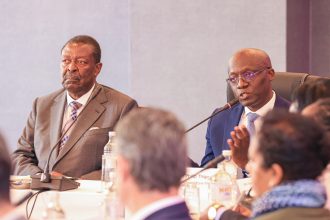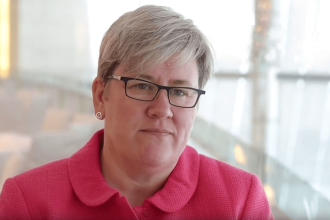By Henry Neondo
In Kenya’s Rift Valley, a silent yet transformative movement is taking root among the youth living in areas considered as Mau ecosystem.
With their ancestral wisdom and a keen sense of modern ecological challenges, young men and women are championing bio-cultural conservation—a philosophy and practice that emphasizes the co-evolution and mutual adaptation of cultural and biological diversity. Their efforts serve as a beacon of hope for communities grappling with deforestation, biodiversity loss, and the erosion of cultural values.
For generations, the communities living in Nakuru, Kericho and Baringo Counties that surround the Mau Ecosystem, the three held forests in reverence. These natural sanctuaries were often declared sacred, transforming them into communal shrines where access was regulated by cultural norms and rituals. This traditional reverence for forests, though diminished by modernity, still resonates among the youth who are now revitalizing these practices.
Patrick Maina, a youth from Londiani in Nakuru County, has become a vocal advocate for this revival. “Our culture plays a crucial role in determining how we interact with nature,” he says.
“Through it, we learn the limits of exploiting natural resources and recognize the delicate balance that sustains life”. Patrick and his peers have been delving into indigenous ecological knowledge, understanding how their ancestors managed resources sustainably long before the advent of formal conservation strategies.
Similarly, Maina Muiri, from Londiani, Kericho County speaks passionately about the lessons hidden in the forests. “While other civilizations preserved their wisdom in books, for us, it’s the trees that carry our history,” he explains. “Each tree tells a story, and every forest is a library of ancestral knowledge. Our ancestors safeguarded this wisdom through traditions that ensured the forests’ survival.”
The Role of bio-cultural conservation
Bio-cultural conservation is more than just preserving forests; it is about sustaining the relationship between people and nature. It recognizes the importance of local ecological knowledge, cultural practices, and the biodiversity they help to protect. For the youth in the Mau ecosystem, this approach has become a unifying force. It fosters a sense of identity and responsibility, inspiring them to see conservation not as an external imposition but as a return to their roots.

This philosophy is evident in how they approach conservation. By participating in cultural education programs, the youth are re-learning the traditional methods of forest management. They study the ecological roles of indigenous trees, the significance of sacred groves, and the medicinal value of plants. These lessons are not just academic but deeply personal, connecting them to their heritage and instilling a sense of pride in their identity.
Challenges to Forest Conservation
Despite their enthusiasm, Maina says the youth face significant hurdles in their conservation efforts. “Rising unemployment in the region has driven many to unsustainable practices such as charcoal burning and illegal logging. These activities have led to widespread deforestation, threatening the biodiversity that the communities once protected through cultural norms,” Maina says.
“The pressure is immense,” Patrick admits. “We’ve been taught to value our trees, but the economic realities force many of us to exploit them for survival.” This tension between conservation ideals and economic necessity highlights the need for holistic solutions that address both environmental and socio-economic challenges.
Another challenge is the erosion of cultural values due to modernity. As younger generations embrace urban lifestyles and global influences, traditional ecological knowledge risks being forgotten. “Modernity often looks down on our cultural practices,” Maina observes. “This disregard for tradition endangers not just our biodiversity but also our cultural identity.”
Youth-Led Initiatives in Conservation
In response to these challenges, the youth in Nakuru have embarked on several innovative initiatives. They have formed conservation groups that blend traditional knowledge with modern environmental science. These groups organize tree-planting drives, establish community nurseries, and advocate for policies that support sustainable land use.
One such initiative is the Molo Youth Environmental Network, which has successfully mobilized hundreds of young people to participate in forest restoration activities. By planting indigenous trees, they aim to revive the biodiversity of degraded areas and create carbon sinks that combat climate change.
Education is another critical component of their efforts. Through workshops and community forums, the youth share knowledge about the importance of forests and the role of culture in conservation. They collaborate with elders to document traditional practices and incorporate them into modern conservation strategies. This intergenerational exchange ensures that cultural wisdom is not lost but adapted to contemporary challenges.
Women and Bio-Cultural Conservation
While the movement is often spearheaded by young men, women also play an equally vital role in bio-cultural conservation. Like in many other communities, women in the Mau Ecosystem are the custodians of indigenous knowledge, particularly in areas like herbal medicine and sustainable agriculture. Their participation in conservation activities enriches the movement, bringing diverse perspectives and expertise.
Groups like the Nakuru Women’s Forest Initiative have been instrumental in restoring degraded landscapes. They focus on growing medicinal plants and educating families about the importance of preserving these resources for future generations. Their work not only enhances biodiversity but also supports community health and well-being.
The Broader Impact of Conservation Efforts
The youth’s commitment to bio-cultural conservation has far-reaching implications. By protecting forests, they are safeguarding vital ecosystem services such as water catchment areas, soil fertility, and climate stabilization. These efforts contribute to the broader goals of sustainable development and climate resilience.
Moreover, their work highlights the interconnectedness of cultural and ecological systems. It demonstrates that conservation is not just about protecting nature but also about preserving the cultural practices that sustain it. This holistic approach offers valuable lessons for other communities facing similar challenges.
Policy Support and Partnerships
To scale their impact, the youth have called for greater support from policymakers and organizations. They advocate for policies that recognize and integrate indigenous knowledge into national conservation strategies. They also seek partnerships with NGOs, academic institutions, and private sector actors to provide resources and training.
One promising development is the collaboration between the youth groups and the Kenya Forest Service (KFS). Together, they are working to establish community-managed forests where local residents have a stake in conservation efforts. This participatory approach not only enhances the effectiveness of conservation but also strengthens community ownership and accountability.
A Vision for the Future
As the youth in the Mau continue their journey, they envision a future where forests thrive alongside vibrant cultural traditions. They dream of a world where the wisdom of their ancestors is not only preserved but also celebrated as a vital resource for addressing modern challenges.
Their work serves as a reminder that conservation is not just a technical endeavor but a deeply human one. It is about reconnecting with our roots, respecting the natural world, and recognizing our role as stewards of the Earth.
Through their efforts, the youth of Nakuru, Baringo and Kericho are planting more than just trees; they are sowing seeds of hope, resilience, and cultural revival. Their story is a testament to the power of young people to drive change and to the enduring strength of traditions that honor the bond between humanity and nature.
As they march forward, they invite others to join them—not just in planting trees but in nurturing the shared heritage that sustains life on this planet. Their call to action is simple yet profound: to live in harmony with nature, guided by the wisdom of the past and the aspirations of the future.
The people who shared this story are members of a communities working with the Maendeleo Endelevu Programme (MEAP), Kenya. MEAP is one of the partners of the African Biodiversity Network, supporting communities in building resilience to the impacts of climate change through adoption of various nature-based solutions.




